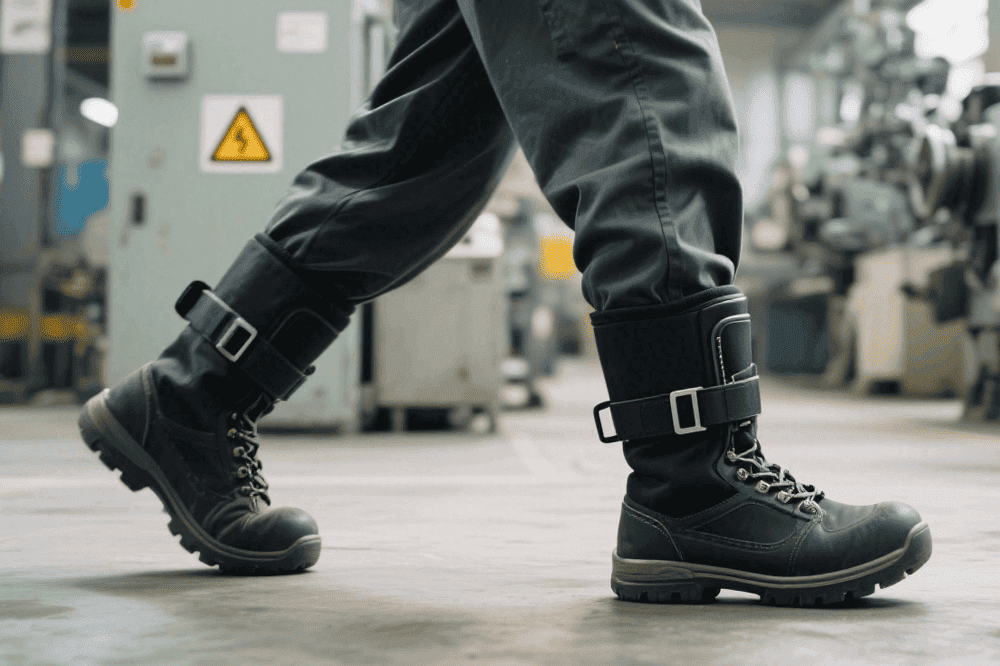Wearing safety shoes is a daily necessity in many industries, from construction to logistics. These shoes protect against hazards such as falling objects, sharp materials, and electric shocks. However, while they’re built to safeguard your feet, many workers still struggle with discomfort and pain after long shifts. The good news is that foot pain isn’t inevitable. By understanding what causes it and how to prevent it, you can stay safe and comfortable at work. Below are practical tips on how to avoid foot pain when wearing safety shoes
1. Start with the Right Fit
The most common reason for sore or aching feet is improper shoe size. A pair that’s too tight can restrict blood flow and cause blisters, while shoes that are too loose may lead to friction and instability.
Before making a purchase, always measure both feet — one is often slightly larger than the other. Try on your safety shoes at the end of the day, when your feet are at their largest, and wear the same socks you use at work. A reliable safety shoes supplier usually provides a precise sizing chart or personalized fitting advice to help you find the perfect size.
2. Prioritize Cushioning and Arch Support
Comfort is more than just a soft insole — it’s about proper support. Prolonged standing or walking on hard floors can cause strain on the arch and heel. Choose shoes with ergonomic insoles that match your foot’s natural shape.
If your shoes don’t provide enough cushioning, consider replacing the factory insoles with orthopedic or gel inserts. These can reduce shock impact and evenly distribute pressure, helping to prevent heel pain and plantar fasciitis.
3. Allow for Breathability
Poor ventilation is a hidden cause of foot discomfort. Moisture buildup inside your shoes can lead to heat, odor, and skin irritation. For warm environments or summer use, opt for models made with breathable mesh panels or moisture-wicking linings.
High-quality safety shoes manufacturer often design shoes using advanced fabrics that combine protection with air circulation — keeping your feet dry and fresh even during long shifts.
4. Break Them In Gradually
Even the most comfortable safety shoes need a short break-in period. Wearing them for an entire day right after purchase can cause friction and pain. Instead, start by wearing them for a few hours each day and gradually increase the duration.
This process allows the materials to adapt to your feet’s shape, minimizing discomfort and ensuring a custom fit over time.
5. Keep Your Shoes Clean and Dry
Dirt and moisture can affect the flexibility and lifespan of your footwear. Regularly clean your safety shoes to prevent stiffness and odor. After exposure to water, let them air dry naturally — avoid direct heat sources, as they can harden the material and distort the fit.
Maintaining your shoes properly not only improves comfort but also extends their protective performance.
6. Replace Worn-Out Insoles and Shoes
Even high-quality safety footwear has a lifespan. Over time, insoles flatten, soles wear down, and internal padding loses elasticity. Continuing to wear old shoes can cause uneven pressure and pain.
Check your shoes regularly for signs of wear. If you notice discomfort despite having previously good shoes, it may be time for a replacement. Trust a professional safety shoes supplier who offers durable models with replaceable components and after-sales support.
Foot pain should never be part of your work routine. By choosing properly fitted, ergonomically designed footwear from a reputable safety shoes supplier, you can protect your feet and boost your performance at work. The right shoes not only prevent injuries but also improve comfort, productivity, and overall well-being.





Be First to Comment